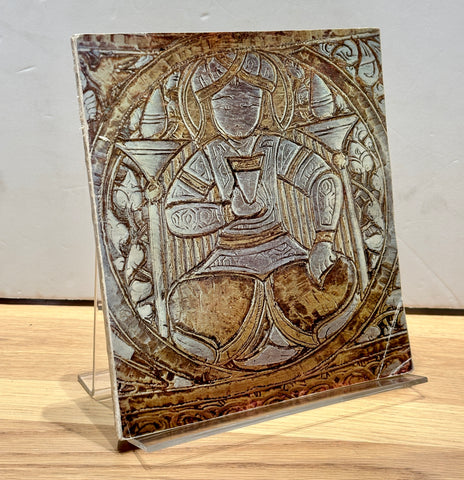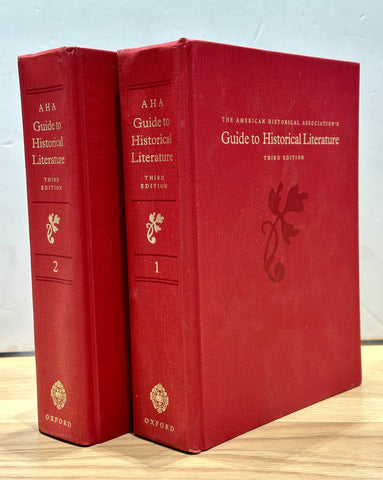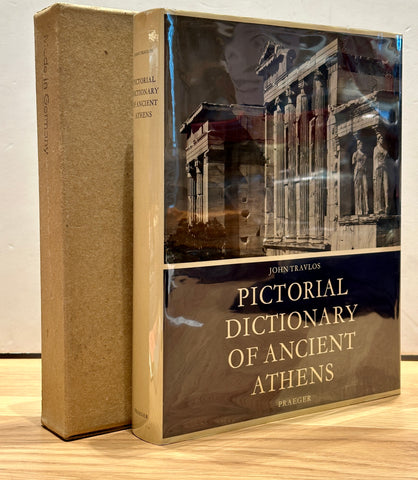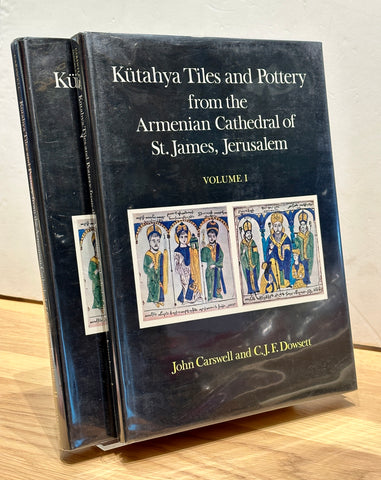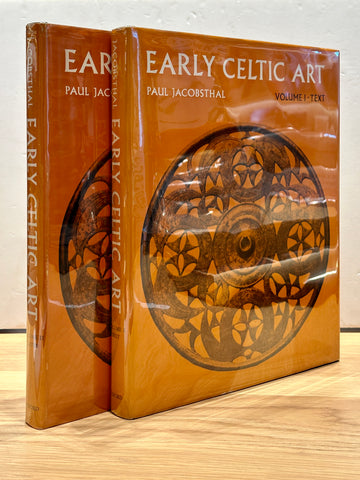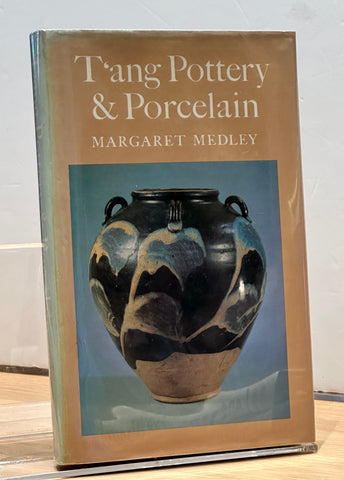
T'ang Pottery & Porcelain by Margaret Medley
During the rich and colourful T'ang dynasty, which lasted from 618 to 906, Chinese civilization reached one of its high peaks, some would say its highest peak of all. Territorial expansion and international trade led to an unprecedented influx of foreign merchants and diplomats, of new ideas and fashions. There was a fresh and open delight in the arts, in painting, poetry, music, and not least in ceramics. Scarcelv ever before had the world seen such virtuosity, variety and sheer joie de vivre in their production. It is remarkable that Margaret Medley's T'ang Pottery and Porcelain is the first major book to have been solely devoted to the subject. It will be of the greatest value to anyone with an interest in Chinese history and ceramics.
The most significant developments in T'ang times were the gradual supersession of earthenware b stoneware and the successful creation of pure white wares, together with the manufacture of fine porcelain towards the end of the dynasty. The white wares immediatelv became popular from Indonesia to Egypt. The lead-glazed wares with their vivid polvchrome decoration and the livelv realism of the tomb figures of men, women and animals, especially horses, were also widely popular, the figures being important documents of social history. In spite of the fact that kilns became associated for the first time with particular wares in the T'ang period, the chronology of T'ang ceramics is full of problems and pitfalls. These have been faced squarely and tackled systematically by the author.
Margaret Medley, who is Curator of the Percival David Foundation of Chinese Art in the University of London, is an internationally known expert on Chinese art, and has written a number of other books in the field, among them Yuan Porcelain and Stoneware and The Chinese Potter: A Practical History of Chinese Ceramics.
16.5cm x 25.5cm, 151 pages, Hardcover, 1981 (Condition: As New / Fine)
Condition Definition:
As New / Fine = New or almost without defect
Very Good = Showing signs of wear
Good / Fair = A bit worn but complete, with defects noted
Poor = worn with visible defects
We Also Recommend

